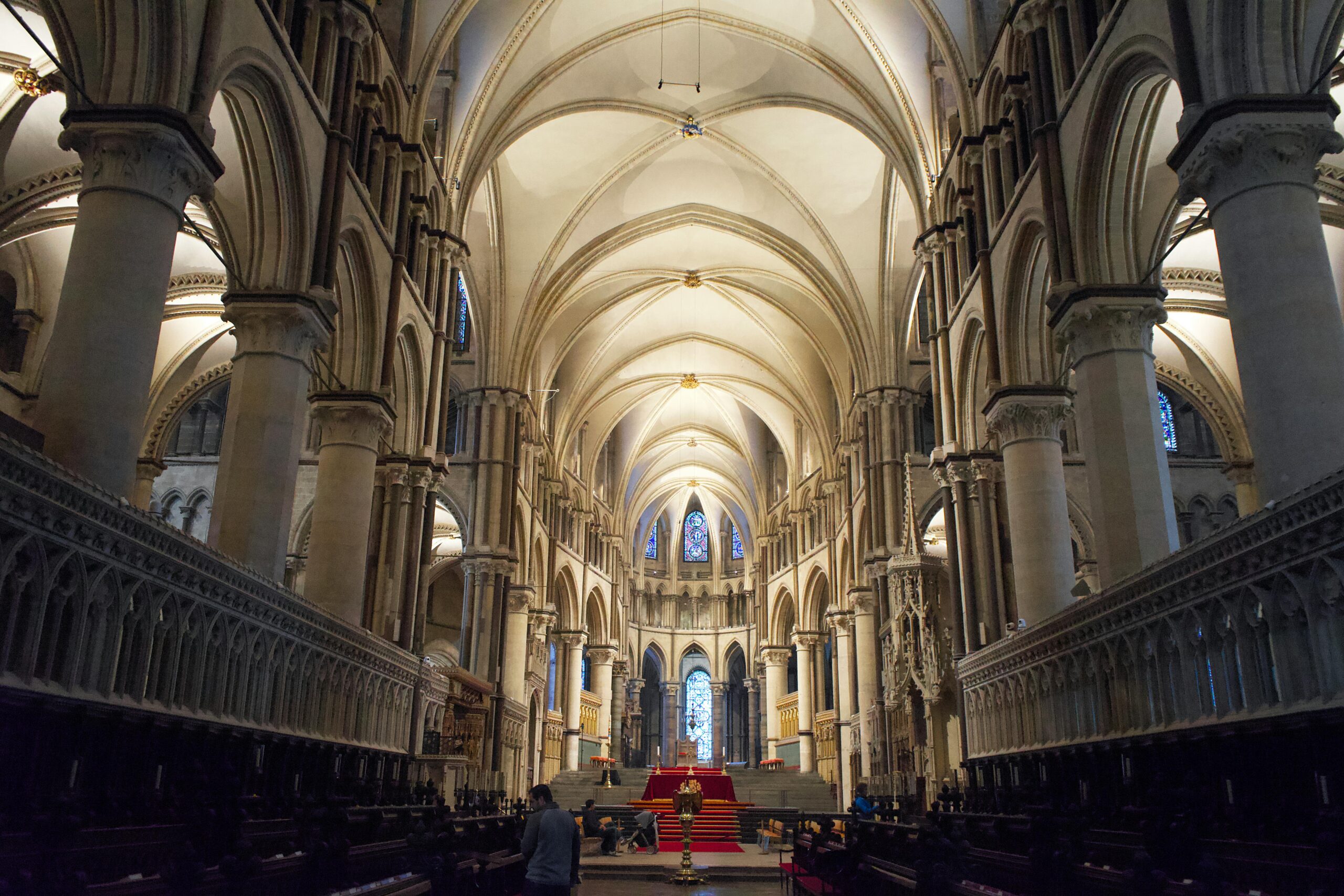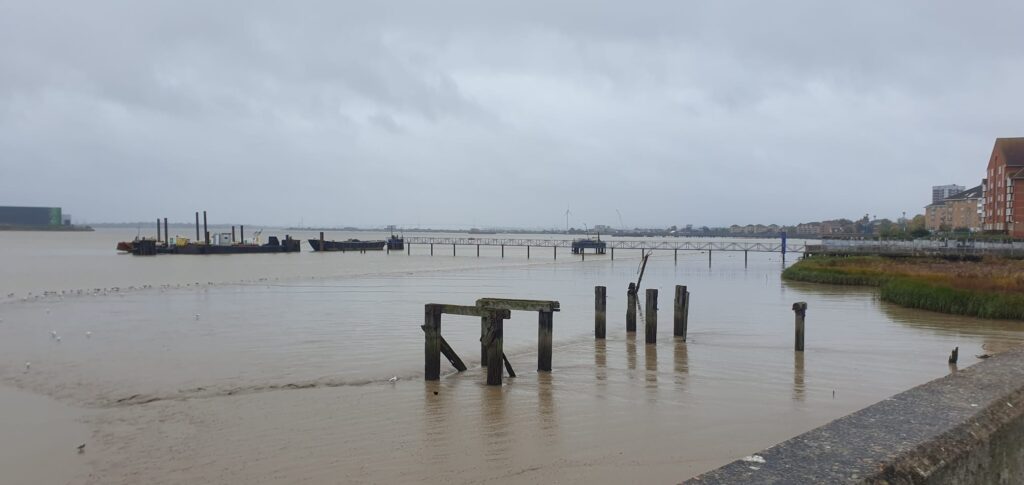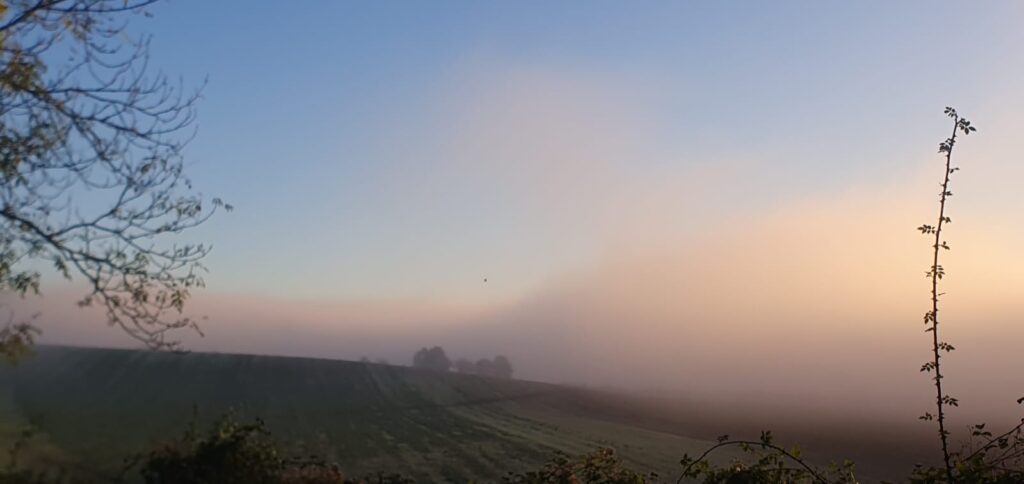As we journey through the Year of Jubilee as ‘Pilgrims of Hope,’ Anna Ringler, House Manager at Caritas Bakhita House, reflects on her recent pilgrimage to Canterbury Cathedral to raise funds for the centre’s work.
Canterbury Cathedral was my first experience of an English cathedral, many years ago. I can still remember the awe that struck me, and the deep sense of God’s grandeur I felt when entering that vast space full of light and colour. It was here that, on 29th December 1170, Archbishop Thomas Becket was murdered, having defended the Church against Henry II’s Constitutions of Clarendon. Soon after his death, he was declared a saint by Pope Alexander III, and it did not take long for pilgrims from all over the country and abroad to start flocking to the shrine to seek the saint’s intercession.
What makes one a pilgrim? There, of course, is the physical aspect of journeying towards a sacred place. And then there is the spiritual element; walking with a heart open to encountering God in all things, be it nature that surrounds you or the people you meet along the way. Being a pilgrim makes one sensitive to these experiences.
Pilgrimage has always been a part of my life, having grown up in a small Austrian village in the shadow of Maria Brettfall, a 16th-century Marian shrine perched on an Alpine rock that attracts locals and tourists alike. Once I was a teenager, I joined in the monthly candle-lit night pilgrimages to St Georgenberg, the oldest shrine in Tyrol dating back to 1310. It was always a deeply prayerful experience.
So when I heard about the old pilgrims’ route – the so-called ‘Becket Way’ from London to Canterbury – I knew it was something I wanted to do. I did not have much time to prepare for the journey, so after briefly researching some background information, on the 20th October off I went.
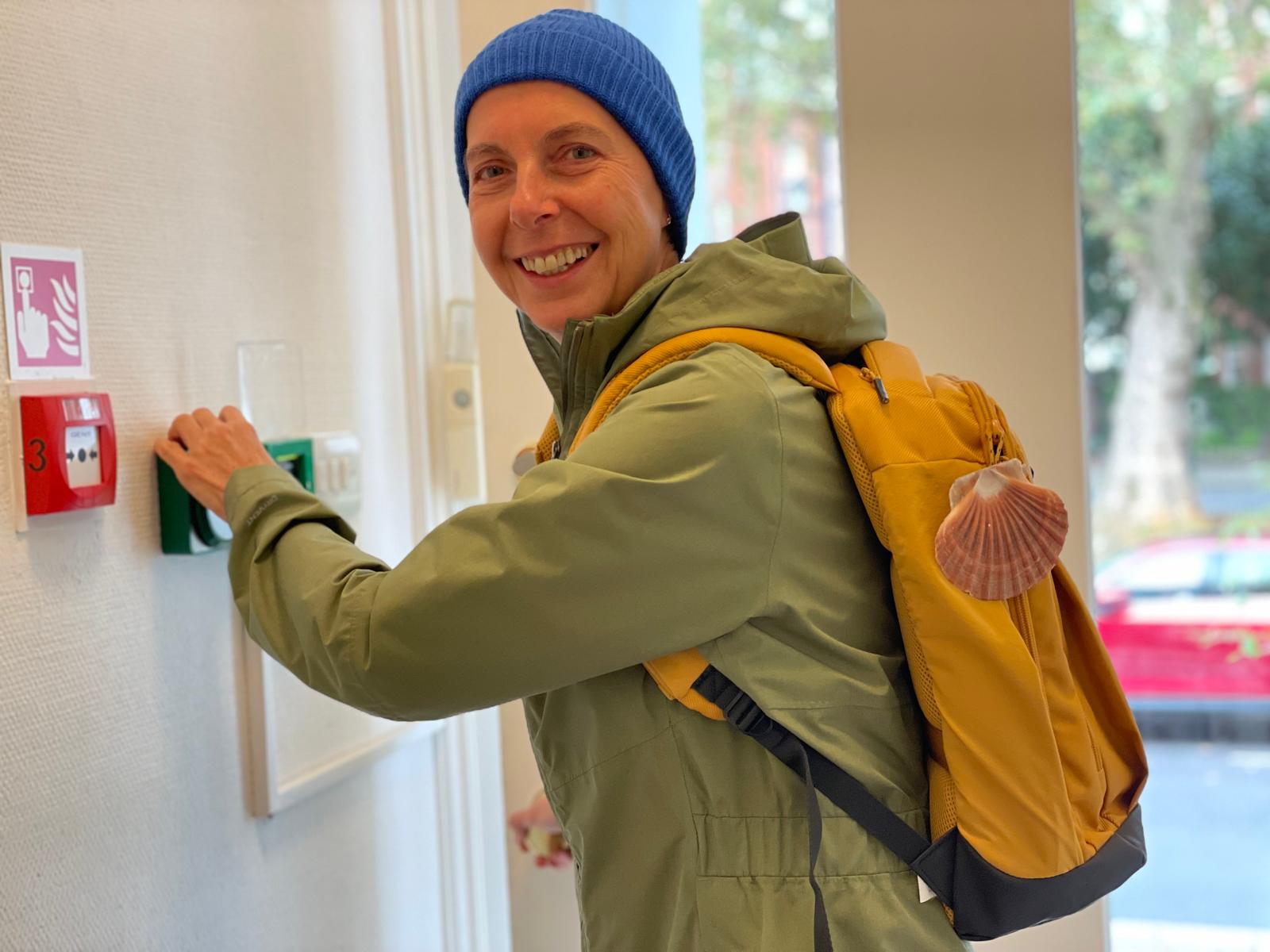
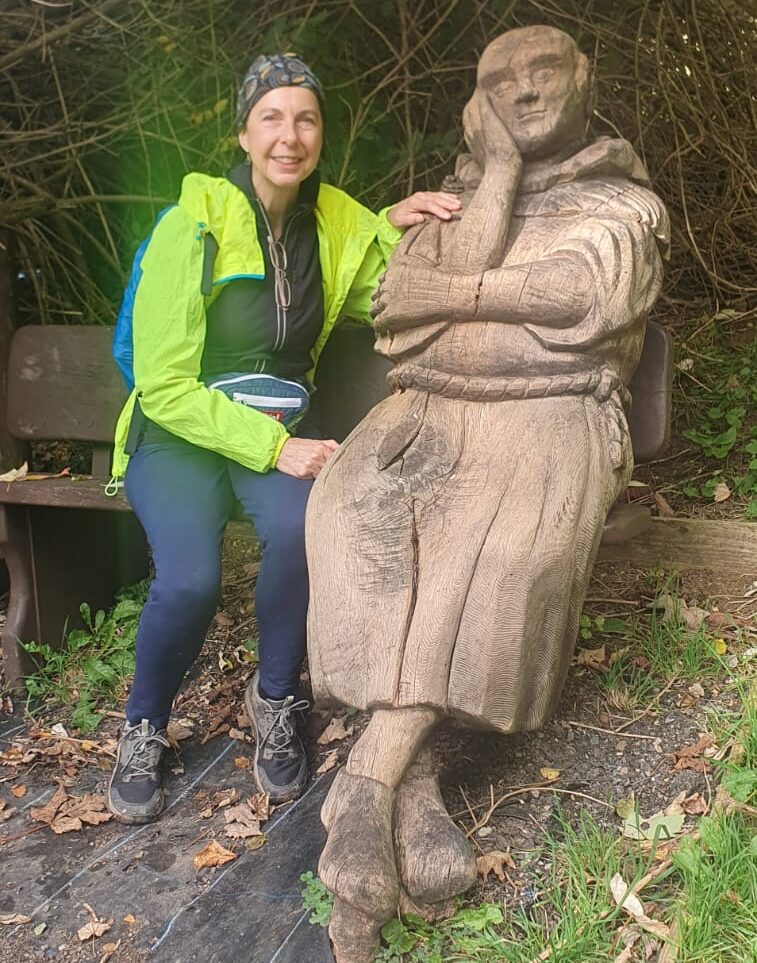
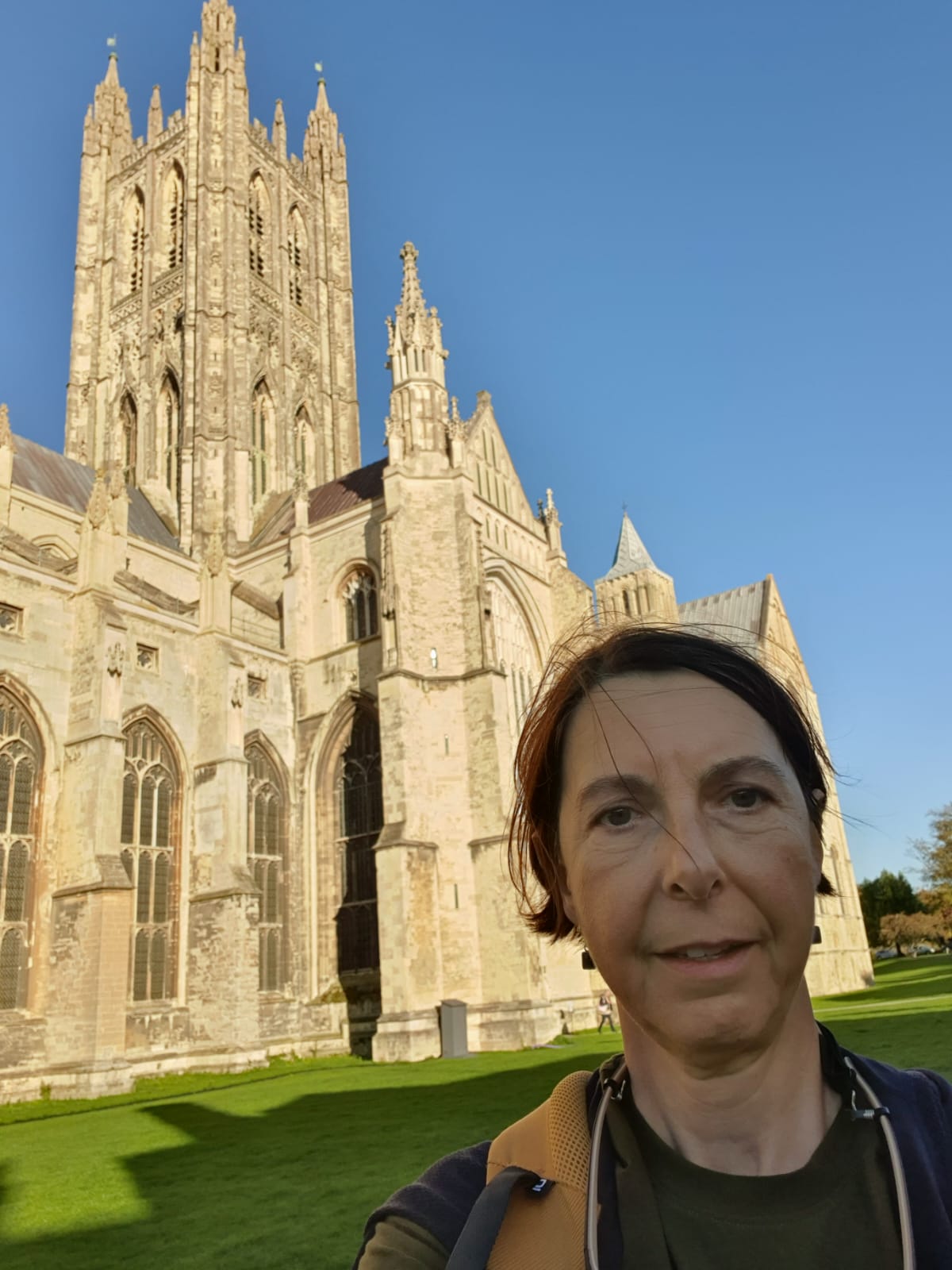
Walking 92 miles in five days was a challenge. I soon discovered that it would not merely be a physical achievement, but rather, mentally and spiritually, a grounding and touching experience. I affectionately described my pilgrimage as ‘walking resilience.’
My aim was to raise funds for the therapeutic activities at Caritas Bakhita House, a safe house for women affected by Human Trafficking and Modern Slavery. I created a GoFundMe page, but the support I ended up receiving from colleagues, friends and volunteers went far beyond the financial. They were walking beside me, emotionally and spiritually; I never felt alone.
I began my journey at Southwark Cathedral by London Bridge; the oldest crossing-point of the River Thames. The pilgrimage took me down a variety of paths along the way, from busy roads to small country lanes and green tunnels that are hardly as wide as your shoulders and tricky to spot. It was these tranquil stretches that I loved most; they gave me a profound sense of being held.
I only met one other pilgrim who was walking the Becket Way; an older man with a light rucksack. We met mid-morning on the last leg to Canterbury, and together enjoyed the orchards, gathering fallen apples and taking in their sweet, fresh scent. After some time, our apps led us in different directions, and we parted ways.
I never felt like a stranger until I reached Canterbury, where suddenly I found myself walking through crowds of tourists and visitors. Perhaps the root word for pilgrim (peregrinus – a stranger on a journey) denotes that feeling of being on a different journey; a meaningful one, where often you don’t know what lies ahead.
Upon arrival in Canterbury, the Cathedral was hosting an exhibition of beautiful hand-crafted model ships. Created by Frances Carlile, these delicate vessels seemed to embark on their own journey through the vast architecture of the Cathedral – a poignant reminder of transience, smallness and vulnerability of human life.
I spent some time contemplating the scene, wondering which one resonated most with my own journey. My eyes fell on a little boat, simply structured but with a golden inner lining, the ends of its oars made of two tiny shells. So, while it was majesty of the cathedral that struck me on my first visit, this time I was moved by the beauty and fragility of life symbolised by these striking boats.
That is where I believe all deep encounters begin; showing our vulnerability is a gateway to experiencing the sacred. This seems to me the essence of a pilgrim’s journey. Looking back on my various pilgrimages, I realise that it has always been this space of sacredness I was hoping to encounter. Having reached my destination, I found that the journey itself was the true reward.
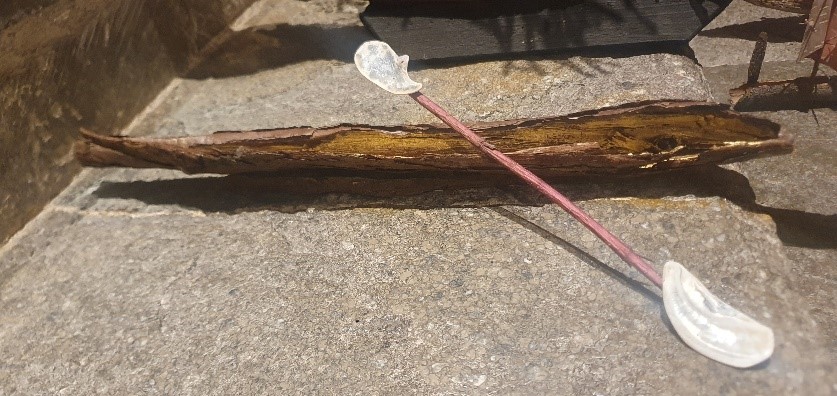
Anna is House Manager at Caritas Bakhita House, a safe house for survivors of Modern Slavery, exploitation and Human Trafficking. Since opening in 2015, the centre has provided accommodation to 205 women and 16 babies from almost 50 different countries. Alongside tailored therapeutic and trauma-informed care, the centre also assists women with bringing perpetrators to justice, and has helped to secure a total of 223 years of prison sentences.
Find out more on the centre’s Impact Report.

